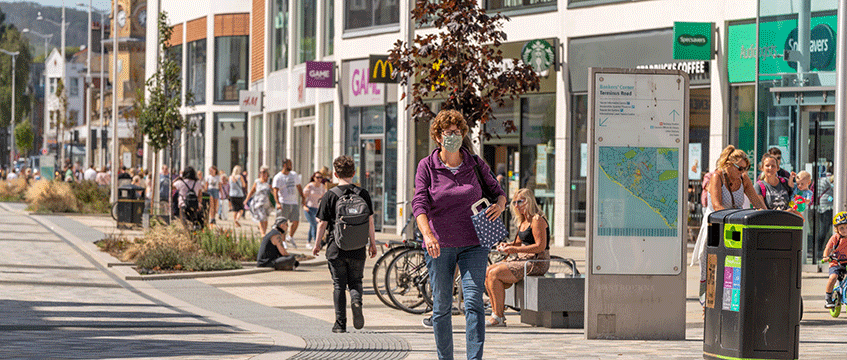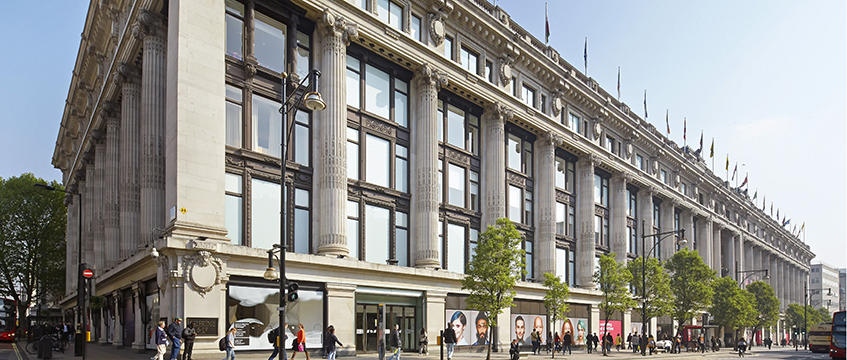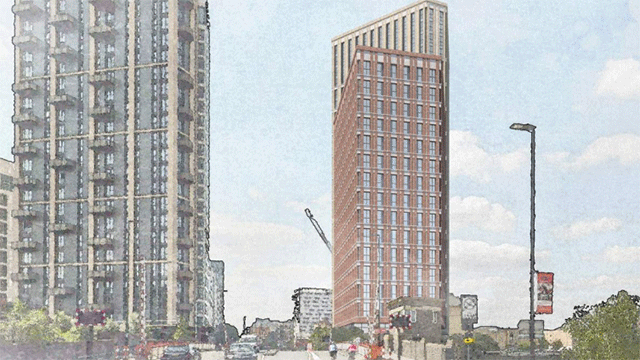As the second lockdown comes into effect this week, the future for the UK’s high street has never been more perilous. Nearly 14,000 shops have permanently shut this year, according to Altus Group.
Giving evidence to the Housing, Communities and Local Government Committee yesterday (2 November), Cathy Parker, co-chair of the Institute of Place Management, estimates around 5,000 more stores will be lost this year, half of which would close as a direct outcome of the pandemic.
To tackle the mammoth challenge of getting town centres through the crisis, the committee has been conducting an inquiry to examine how to develop policies to ensure high streets remain at the heart of local communities, as well as the impact of existing measures to support the high street after the crisis.
Business rates reform, sales taxes, the 15-minute city concept and more controls on PDR conversions from retail to residential were just some of the solutions that have been suggested.
Targeted business rates
For Dominic Curran, property policy adviser at the British Retail Consortium, the critical issue for retailers will be “to get the level of business rates down, to make the system more administratively coherent [and] better linked to market values”, no matter what happens over the next six months.
Where short-term relief is involved, better targeted rates should be made a top priority. According to former Wickes and Iceland boss Bill Grimsey, the major supermarket chains are benefiting from government relief when they “didn’t need it”.
Why give [the big supermarkets] a business rate holiday, which amounts to [over £1bn] … when they didn’t need it? There is no way in the world that money is being well spent
– Bill Grimsey
Grimsey said: “There really has to be some targeted expenditure. Why give [the big supermarkets] a business rate holiday, which amounts to [over £1bn] … when they didn’t need it? There is no way in the world that money is being well spent, whereas it could’ve been spent on supporting the smaller businesses that need it.”
He added: “We mustn’t do this blanket approach of throwing money around.”
On a longer-term level, Grimsey proposed scrapping the “archaic business rates system” in favour of a 2% sales tax on retail sales – which he argued would “produce exactly the same amount produced by business rates in the retail sector”. This “would level the playing field overnight”.
Rethinking taxes
At the same time, Grimsey dismissed the notion of an online sales tax as “absolute nonsense”. “There is absolutely no way the government should interfere with markets by introducing a tax to penalise one route to market,” he said.
“It didn’t do that when they had out-of-town shopping versus town centres, and they shouldn’t do it now with online shopping.”
Instead, Grimsey called for the government to “tax Amazon properly”.
“The next four weeks and Black Friday has come at a great time for online retailers,” he claimed. “This lockdown will play right into their hands – they will have a bumper time from the lockdown. The bricks and mortar retailers will not [be able] to participate in that.”
Parker agreed that a “fundamental review of the tax system” is needed – but the “devil’s always in the detail”.
“We don’t want unintended consequences,” said Parker. “There are big advantages for small retailers to trade online as well.”
She added: “We want to look at opportunities for digital for whole high streets. One of the problems in the response to Covid… is not thinking about the offer of the whole town. How do we put that online?
“Let’s try and use digital to reinforce the attractions we feel strongly about in our towns.”
The 15-minute city
In addition, panellists backed the 15-minute city concept as a route to recovery that local authorities should consider.
“We’re not great at the [15-minute] concept in our big urban centres,” said Parker. If everything in Manchester is shut, what is there to do? There are not that many green spaces and parks.”
Aude Bicquelet-Lock, deputy head of policy and research at the Royal Town Planning Institute, pointed to increasing appetite from planners and the built environment to “implement new models” that support the concept, especially as they address the challenges around health and climate emergencies and economic recovery.
We want to look at opportunities for digital for whole high streets. One of the problems in the response to Covid… is not thinking about the offer of the whole town. How do we put that online?
– Cathy Parker, co-chair of the Institute of Place Management
But she said these will hinge on adequate investment, funding, investment in planning and strong local leadership.
Bicquelet-Lock suggested a chief planning officer “at the top table” at local authorities as a solution, to help provide long-term vision, community engagement and “certainty for development”.
Leading the way
One of the silver linings of the pandemic is that it has “provided an opportunity” for central government to ask local governments how it can help with their longer-term plans for town centres, according to Grimsey.
Now, more than ever, local authorities “need to become the custodians of place”. “We must stop the appeal process allowing a national officer to come in and override what local authorities and hopefully local communities have [rejected],” he said.
Grimsey cited Neil Schneider, formerly chief executive of Stockton Council, as an example of how leaders should approach their town centres.
“[He] has bought shopping centres, not to run – local authorities are not qualified to run those kinds of commercial centres – but to repurpose them,” said Grimsey. Stockton’s Castlegate shopping centre, for example, is set to be demolished to become a park.
Grimsey also said that finding local authority chief executives with commercial nous is critical in putting together viable business plans.
“The key is, we need everybody, up and down the country, every local authority, to step up to the plate, leadership to be redefined, and we need ‘localism on steroids’,” he added.
“We need communities to take the responsibility for their towns and compete for people to live, work and play and visit, based on their heritage, then you can curate [each] place accordingly to make it exciting and different.”
Repurposing town spaces
Retail has always gravitated to where the footfall is, but as more people adjust to remote working, it is becoming more likely that retail will disperse to smaller towns and suburban areas.
“A commercial business now isn’t going to want to spend high rents in city centres if a lot of those people can work more efficiently from home,” said Parker.
For Grimsey, this in turn presents a crucial opportunity for the property market to reverse its fortunes, by repurposing vacant buildings in smaller towns.
Underused bank branches, for instance, could be converted into local workspaces. “People have worked from home because of Covid, but evidence [shows] they are lonely,” said Grimsey. “They are happy to go somewhere with great wifi, a good coffee shop and a buzz about it.”
In his view, curating the spaces around these will “turn the property market upside-down”.
“The commercial property market is facing a cliff-edge again, based on offices and retail,” Grimsey said. “They have got to rebase the pricing and it’s got to change, but you can use these buildings for other things. That’s what I like about the opportunity this offers up.”
While the panellists broadly acknowledged that the government’s radical PDR reforms will increase the flexibility of a space, its changes were roundly criticised for neglecting to introduce more controls.
“There should be controls to ensure the location of new residential accommodation is not prejudicial to plans to support or improve the town-centre economy,” said Bicquelet-Lock.
“There are no controls to stop residential incursions into what may be regarded as key commercial areas, which could frustrate or contradict plans to refocus commercial activity within a centre.”
Avoiding ‘gap teeth’
Curran noted that uncontrolled PDR conversions risks creating “gap tooth” high streets, with “long stretches” of housing developments in between shops undermining “the coherence of the town centre”.
And while Parker advocated more housing above commercial spaces, she warned property owners tend to “do things to get the most rental value for their property, and that is a threat”.
“We have seen the pressure this has put on commercial office space in London,” she said. “We have to be careful that we don’t undermine the functionality of our town centres.”
“A diverse high street is a sustainable high street,” agreed Michael Wheeler, political officer at USDAW. “The last thing we would want to see is where property owners seek the quickest return of investment, and if that led to a wave of conversions to residential … that is not the way to go forward.”
Elsewhere, Grimsey flagged that the new “infrastructure levy”, as proposed in the government’s white paper, appears “a bit woolly”.
“Who will pay for town centre improvements in the future if we’ve not got any 106 money coming through?” he asked.
Grimsey added that the white paper was “overly concerned” about housing, without factoring in the spaces around an increased density. “Planning reform should be about the quality of place, and not just housing delivery,” he said.
Back to the drawing board
Panellists also felt that some of the proposals put forward for grants from the government’s £1bn Future High Streets fund, which has shortlisted 100 towns, were too outdated.
Grimsey criticised the “spade-ready projects already sitting on the shelves” at some of these locations.
“This is the cart before the horse,” he said. “Throwing money out there isn’t going to solve this issue.
“They don’t have the plans, visions or leadership in place to look long-term at the trends coming down the track and what we need to do to curate these places to make them community hubs appropriate for the 21st century.”
Similarly, Parker outlined concerns that the visions of some of the plans that have been awarded funding will not create enough change.
She added that many have not received enough “emboldenment” from the business community to truly make a difference.
“The money is brilliant for the places that get it, but we need to make sure we are spending it on plans that really make a difference,” she said.
“This is a competitive fund – most places won’t get any money from it. That’s a big problem. And I’m not sure whether the plans in some of the places that are going to be funded are going to be transformational. Some of those plans were drawn up quite some time [before] Covid.”
To send feedback, e-mail pui-guan.man@egi.co.uk or tweet @PuiGuanM or @estatesgazette












